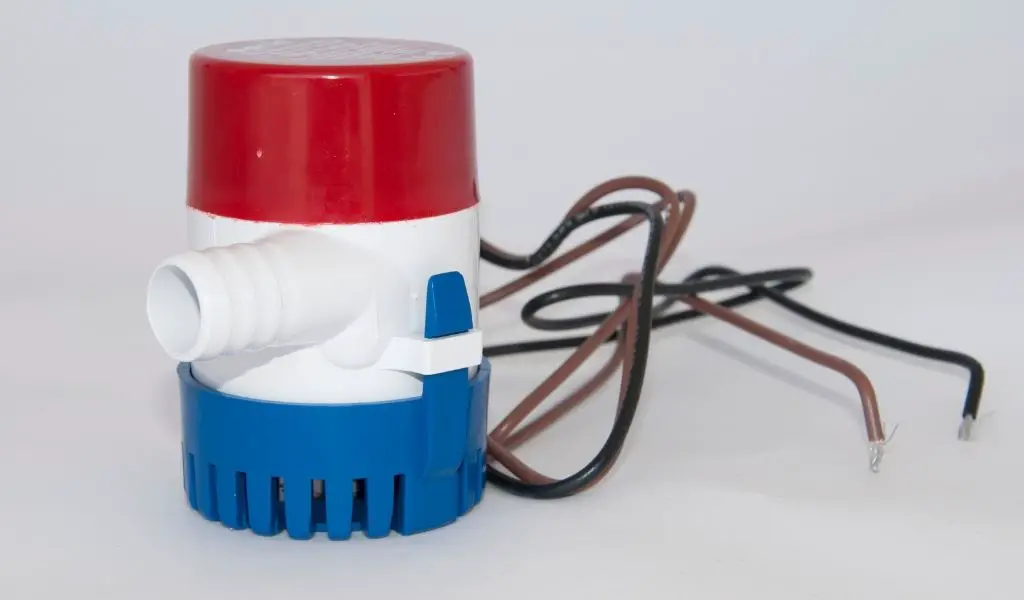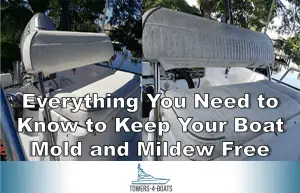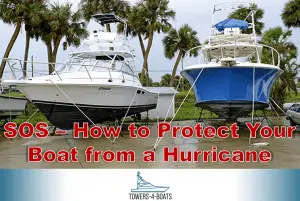Boating in the United States has become a very popular pastime. Over the centuries, it has evolved into a leisure activity where people travel by boat, and a recreational activity for fishing and sports. Boats have become ‘the thing to have’, and a lot of people just buy them on impulse. As more and more people buy boats, the number of owners with little to no experience, and training in boating is also increasing.
While boating is a pleasurable activity, it comes with its own set of rules and basic knowledge that every enthusiast should have. The obvious things you need to know are boating safety, regulations, and critical gear equipment. As a boat owner, whether for leisure or for sport, you must be knowledgeable about your boat and its critical equipment. One essential item that is often overlooked is the bilge pump.
The bilge pump serves to evacuate accumulated water and oil from your boat. During normal operation, it provides a convenient way to keep your boat dray. It can buy time in potentially hazardous situations like a major storm or a leak from hull damage. , keeping you and your passengers safe until repairs can be made.
The Bilge Pump: All You Need to Know
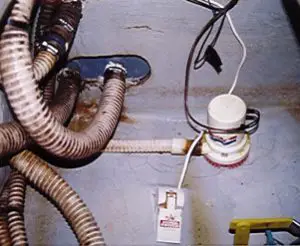
Liquid sludge which is usually a combination of water (via wave action, through cracks in the hull, gradually infiltration through propeller shaft seals, from rain etc.), engine oil leaks, food particles and drink spills, among others accumulates in the bottom of the boat (called the bilge) over time. This unpleasant accumulated liquid sludge is called bilge water.
The increasing depth of the crack or hole below the water line, dramatically increases the rate of bilge water flow into the boat, and it has been estimated that a one inch hole located one foot below the surface would create a bilge inflow of about 3000 litres per hour!
Basically, your boat would get 6600 lbs heavier in one hour! For a boat out at sea, such proportion creates an immediate threat of sinking if left unchecked.
Bilge pumps are electric or manually powered mechanical devices, used to clear bilge water from your boat. Appropriately, your boat would come with a bilge pump, and while it may be very capable in handling moderate bilge water accumulation, it should be powerful enough to buy enough time in a life – threatening situation like hull damage where sinking is an immediate threat, until help arrives.
Many boat owners keep an extra bilge pump on hand, or replace their bilge pumps with larger ones. It should be noted however, that for long – distance travel, human lives are at stake and in the situation of danger, help would take time to arrive. The bigger the bilge pump you buy, the higher your chances of survival if hull damage indeed occurs.
Outlined below are important considerations every boat owner should make, before buying a bilge pump for their boat:
The Type of Boat
When selecting a bilge pump, the type of boat is an important factor to consider. Open boats like the ones used in sport fishing, and fast boats that cause a lot of splash are more susceptible to flooding from rain and wave action than closed or slow large boats.
As safety is involved, the largest bilge pump should be the obvious choice. But when there is a need make a selection from few options, a bilge pump with a larger capacity should be selected for an open boat, than for a closed boat of the same size. This is because, the open boat has more sources of water infiltration than its closed counterpart, and thus more bilge water would accumulate under the same conditions.
As another example, outboards and stern – drives are equipped with very heavy engines. Their significant weight makes them vulnerable to sinking, even under moderate bilge water infiltration. The selected pumps should be as powerful as possible, and a backup pump is very important. Also, a marine charger is a necessity, as these boats are rarely equipped with a battery charging system. If the batteries are dead, the pump cannot function when needed.
Matching The Pump to The Boat Size
Another important consideration to make when selecting a bilge pump, is the boat size. As an extension of the type of boat, it is intuitive that the larger the larger the boat, the larger the pump capacity should be. For larger boats, water infiltration through rain and wave action is greater than for smaller boats.
Also, due to their large weights, collisions are likely to create more pronounced damage. It’s not possible to place an exact value on the required pump size for a particular boat, but good approximations can be made while staying within ranges of safety.
There are catalogues and tables of estimated pump capacity for different boat sizes, put together by experienced boat professionals. These serve as good reference points when matching pumps to a boat size.
The Pump’s Power Source; Electrical or Manual
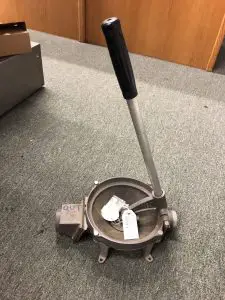
While most pumps are electrically powered, manual pumps are still available in the market. In comparison, electric pumps are unlimited in their pumping capacity and are faster than manual pumps.
Manual pumps however have the advantage of their ability to be used, even when you are out of battery power. For small boat owners who are not willing to spend extra money on efficient electric pumps, a manual pump can come in handy. They are limited in their pumping capacity, and to the endurance of the person exerting the pumping effort.
The pump location also has a direct effect on the comfort level of the pumper; bad location can mean very uncomfortable positions to pump. The ideal boat should however have both electric pumps and at least one manual pump, to cater for unforeseen circumstances; you cannot be too safe!
Where Should the Bilge Pump Be Installed?
Ideally, two pumps should be installed in the bilge of every boat (the main pump and backup pump).
One option is to install both pumps on the same level in the bilge and place the switch for the backup a little higher than the main pump’s switch, and the other is to place the backup pump with its switch at a higher level than the main pump. Either way, if the main pump fails or can’t keep up with the water inflow, the backup pump can kick in.
Manual pumps should be installed at a position that would allow easy access, making pumping easier for the boat owner. Cramped up spaces should be avoided if possible.
The discharge end and hose of any pump should be placed above the water line. This helps to prevent the possibility of the pumped water being forced back into the bilge under water pressure, when the power supply to the pump is turned off.
Also, the bigger the pump, the bigger the intake and discharge hoses should be. This helps to reduce the chances of flow restriction by debris and pressure loss due to head. All hoses should be clean and free of corrosion or corrugation.
Frequently Asked Questions (FAQs)
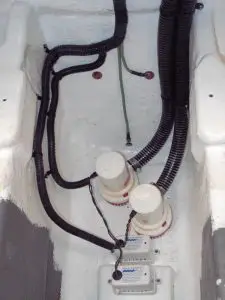
How many bilge pumps do you need?
There is no right answer to this question. However, one main pump, a backup pump, and at least one manual pump in the main bilge compartment should suffice, to keep you well within safety levels. If you feel you want four, why not! You can never be too safe. For larger boats, with several bilge compartments, the less floodable compartments can be fitted with just one pump.
Should I Have an Automatic Bilge Pump?
Yes. It is advised that the two pumps (main and backup) should be both automatic. This way, once the bilge water accumulates above a tolerance level, the pumping action can begin independently. A lot of large boats have sunk, simply because the boat owners were not aware of the infiltration and could not switch on the pumps on time. An automatic pumps solves this, by removing the factor of human error or negligence.
Do I Need a Backup Emergency Pump?
Yes. No chances should be taken with safety. A backup emergency pump would save you from trouble, should the main pump fail in service.
Conclusion
As little or large as they come, the conditions of bilge pumps have been the deciding factor as to whether a boat would sink or stay afloat for decades. They are your boats life jacket in an emergency. Every boat owner should ensure the bilge pumps are properly sized and regularly maintained.
Safety should not be left to chance, and every boat should be equipped with a fully functioning backup pump and at least one manual pump in case you run out of electrical power.
It is necessary to note, that basically no boat has a bilge pump large enough, to balance out hull damage water infiltration. If this occurs, it is then a question of how long the bilge pump can hold the water level until help arrives. Simply put, the bigger the better.
Errors such as flow restriction, siphoning, faulty electrical connections, and power loss have being some of the attributed causes of bilge pump failure. By following the points outlined above, you would ensure that boating is both fun and safe!

